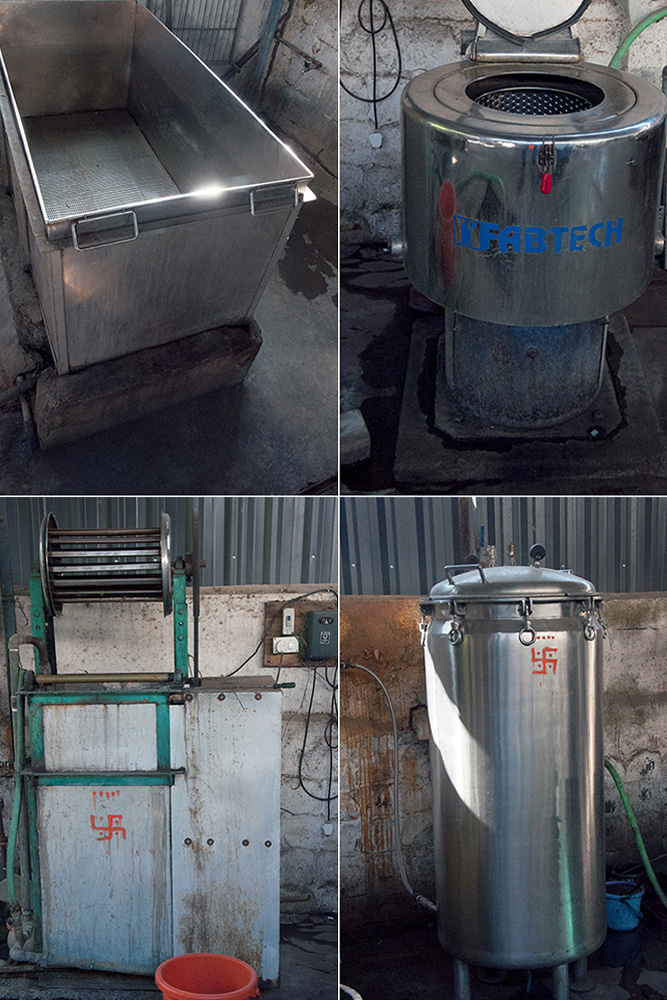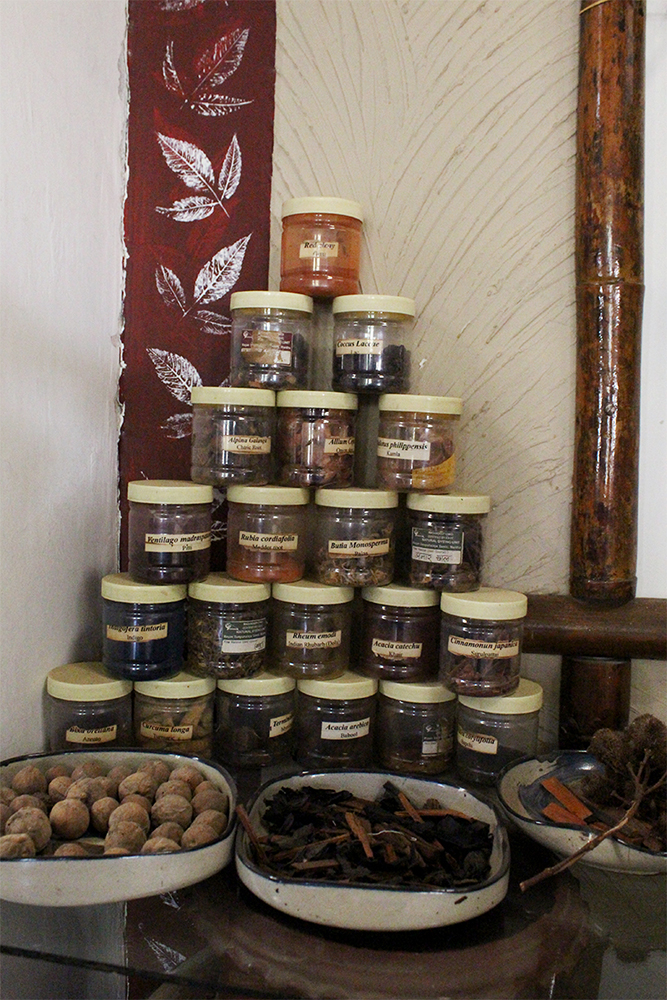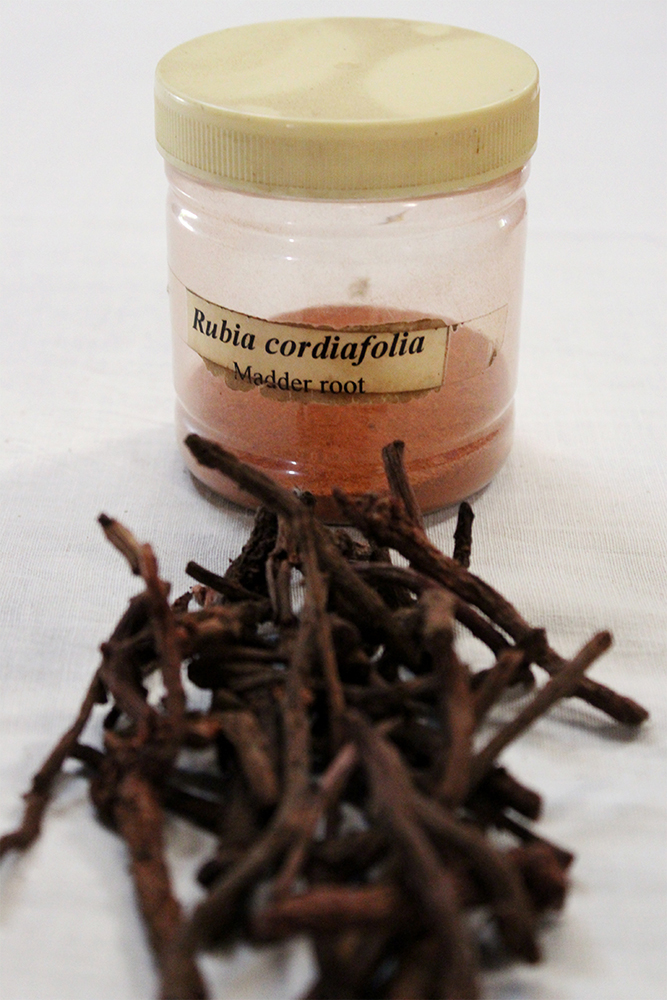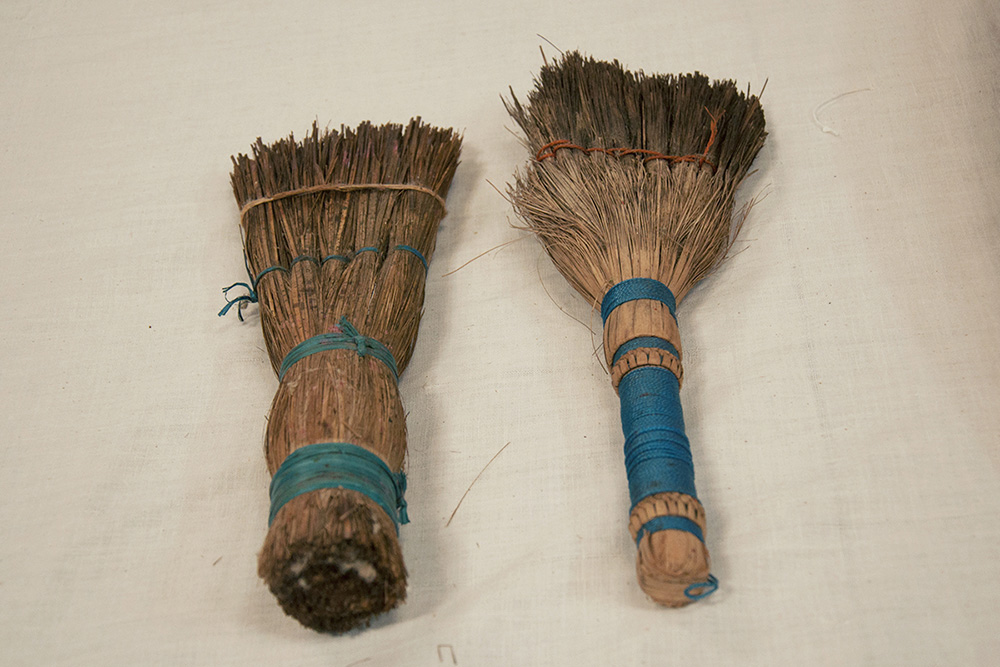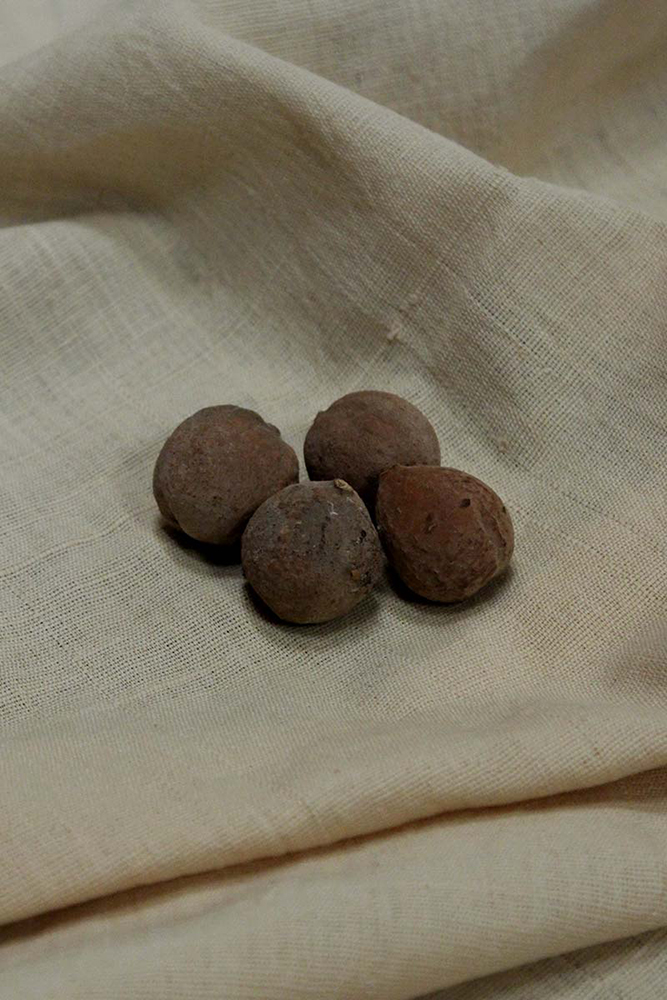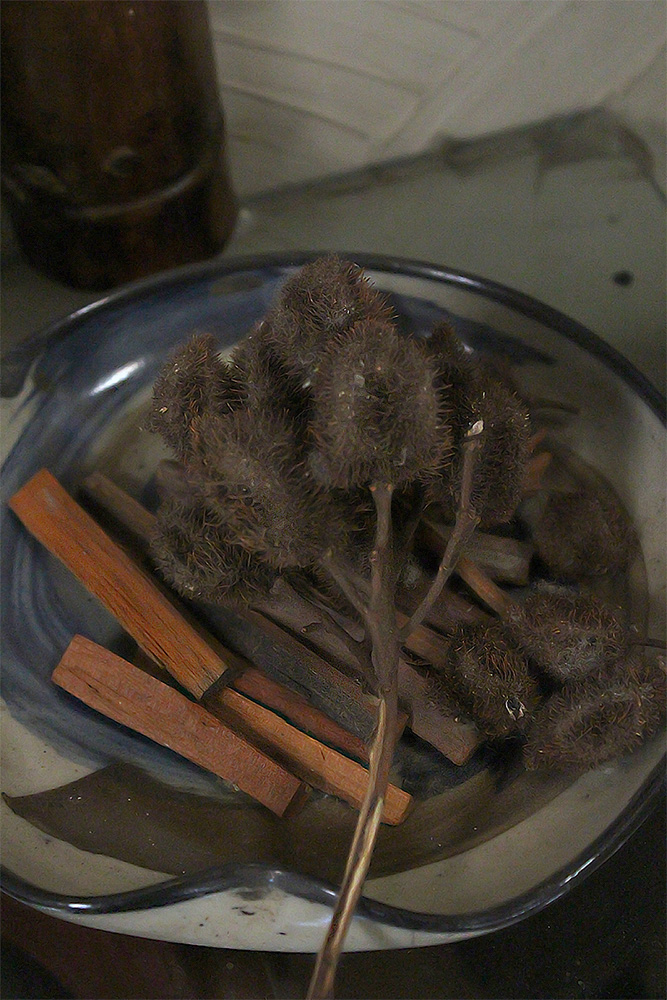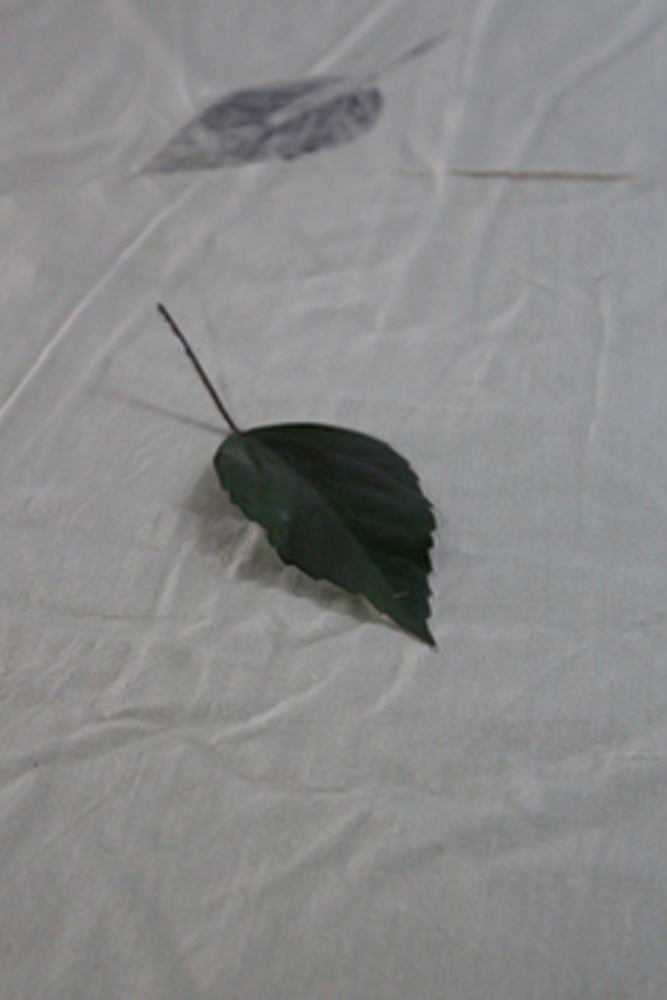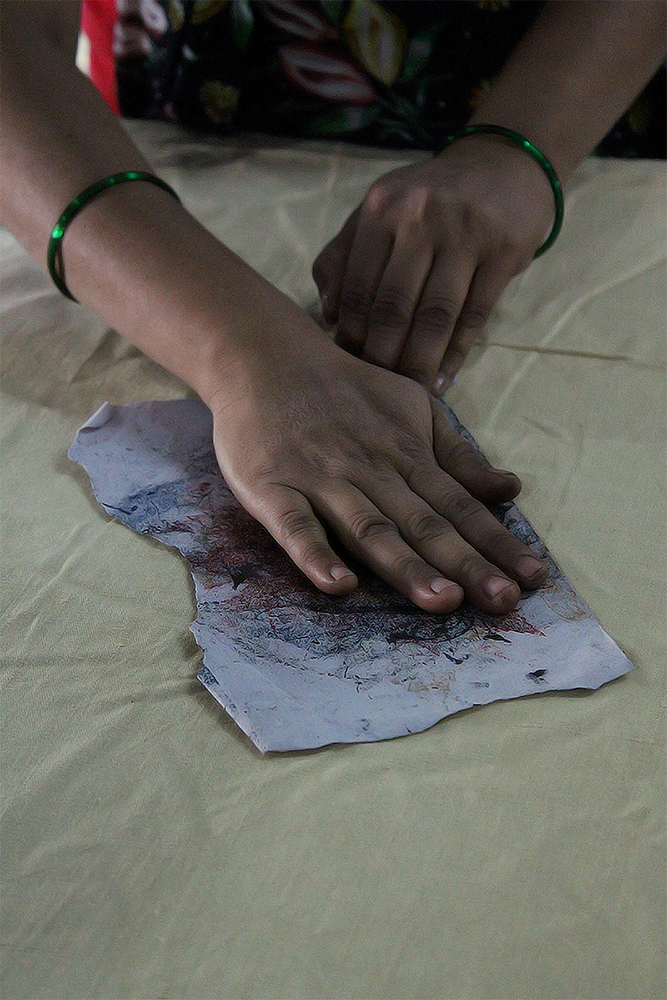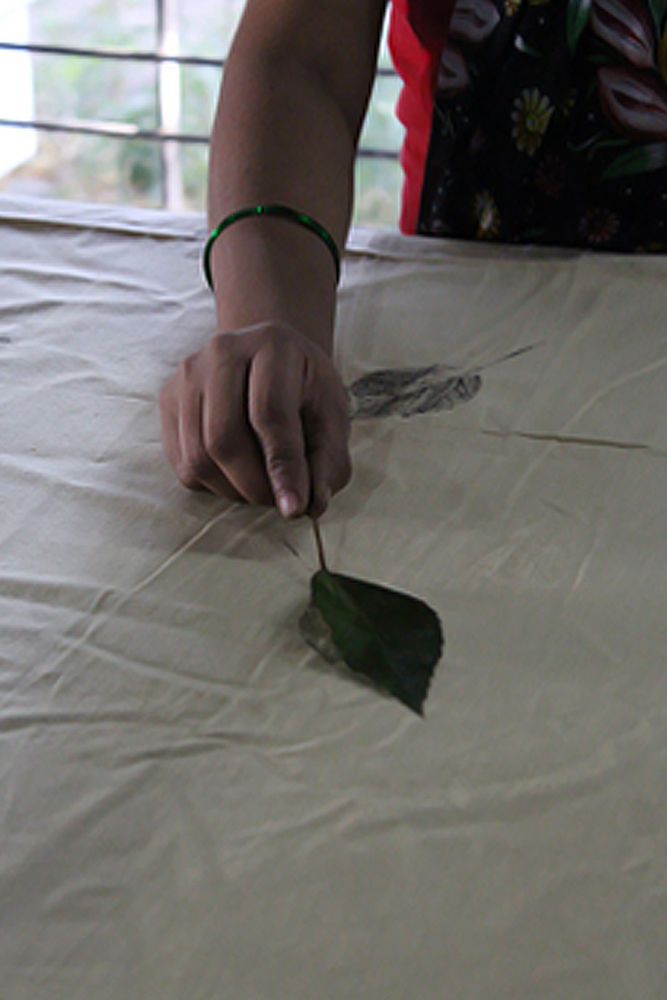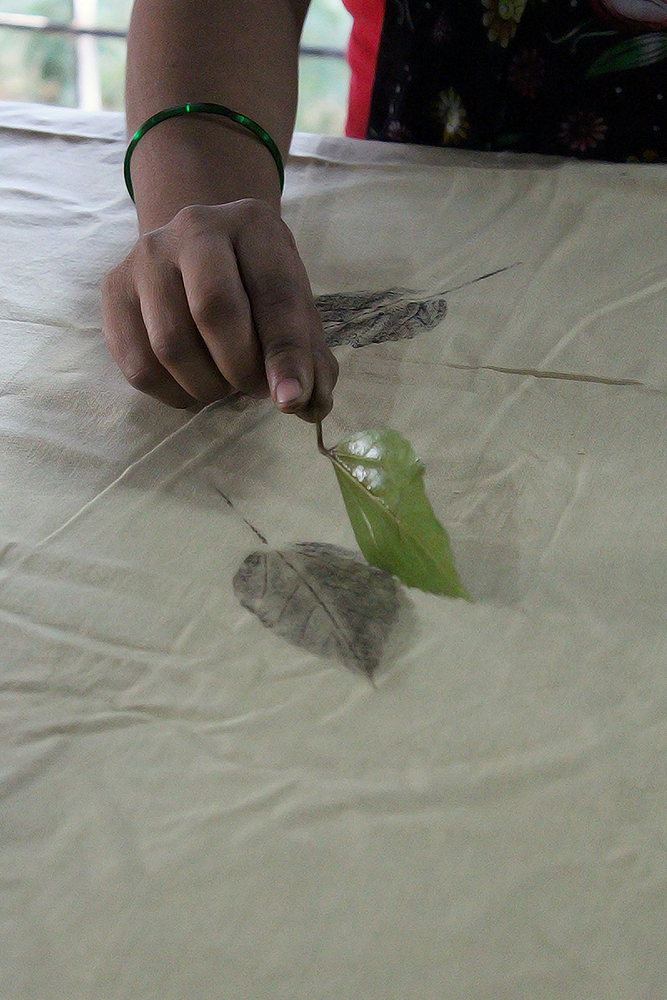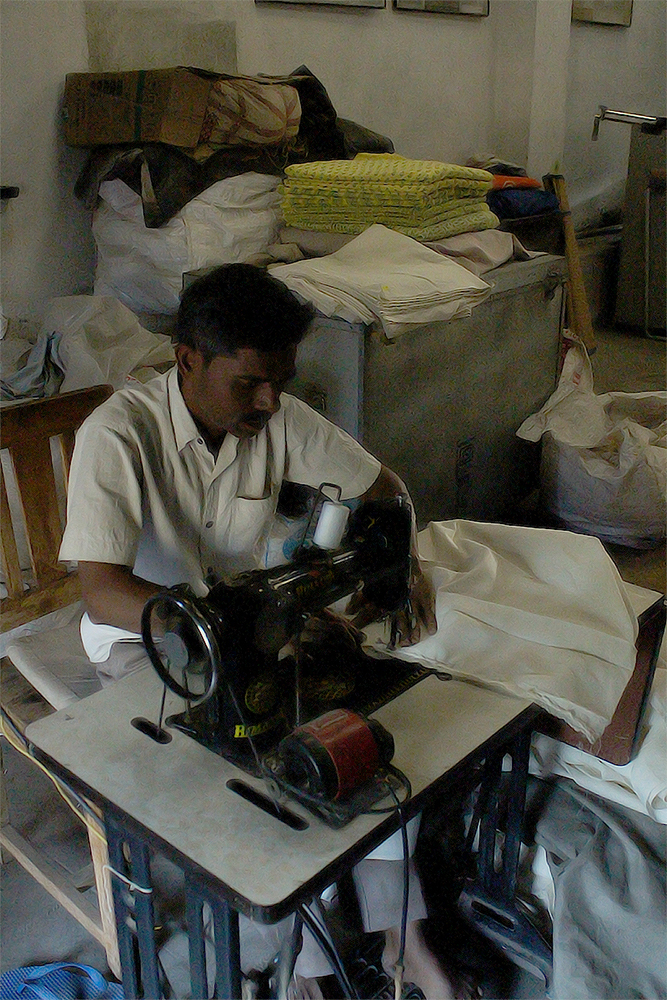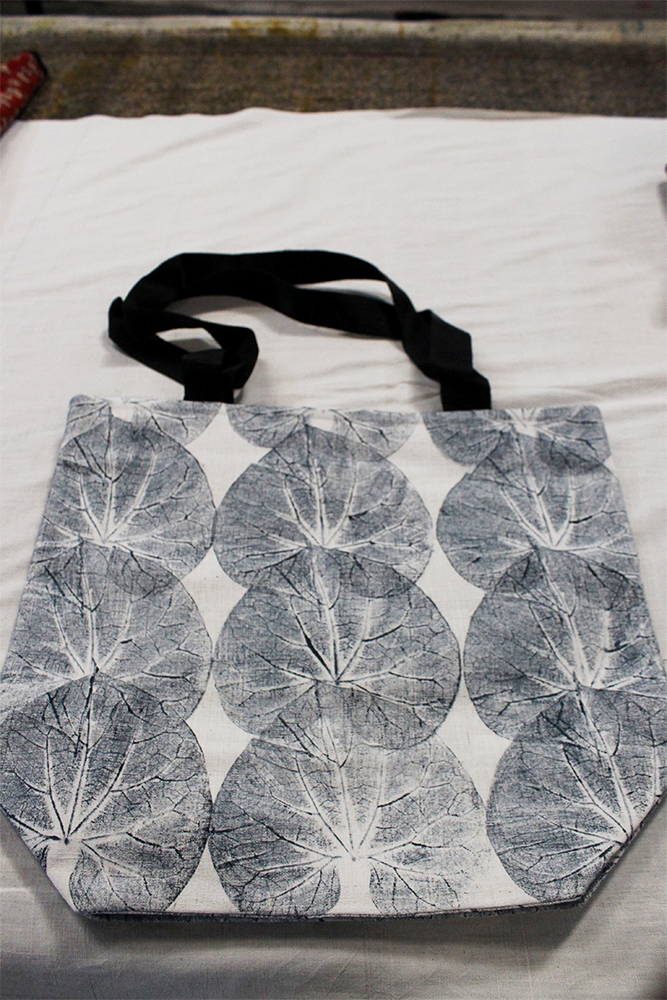Design Gallery
Leaf Printing on Khadi
Fabric Printing
by
India is blessed with a heritage of diverse and rich textile traditions, possessing the immense potential to gather resources to make and decorate textile items. Magan Sangrahalaya Samiti based in Wardha, Maharashtra, is a non-governmental organization restoring traditional crafts of Indian culture. It has been regarded for their development of new techniques of natural dyeing and recycling the effluents of a natural dyeing unit, by the Department of Science and Technology, Govt. of India, which has taken the unit a long way in their eco-friendly operations run. Hence the textile unit of MSS could replace the chemical dyes, a major health hazard for artisans working in the textile units, and a potential environmental pollutant, with organic dyes of 200 hues derived from local forest produce. Also, they introduced a new technique of fresh leaf printing, as a low-cost alternative to block printing. This is practiced under the training and guidance of Mr. Mukesh Lutade, Director of Khadi and Natural Dyeing Department at Magan Sangrahalaya Samiti.
For more details:
https://www.dsource.in/resource/block-and-fresh-leaf-printing-khadi-maharashtra












